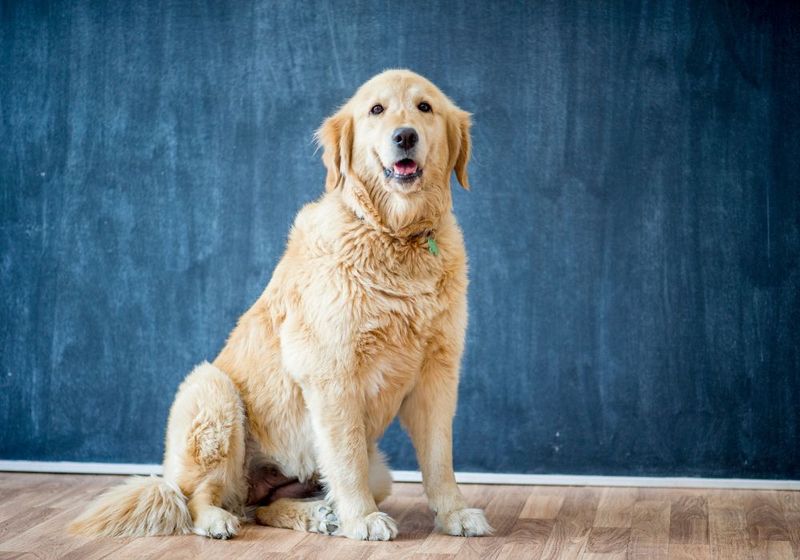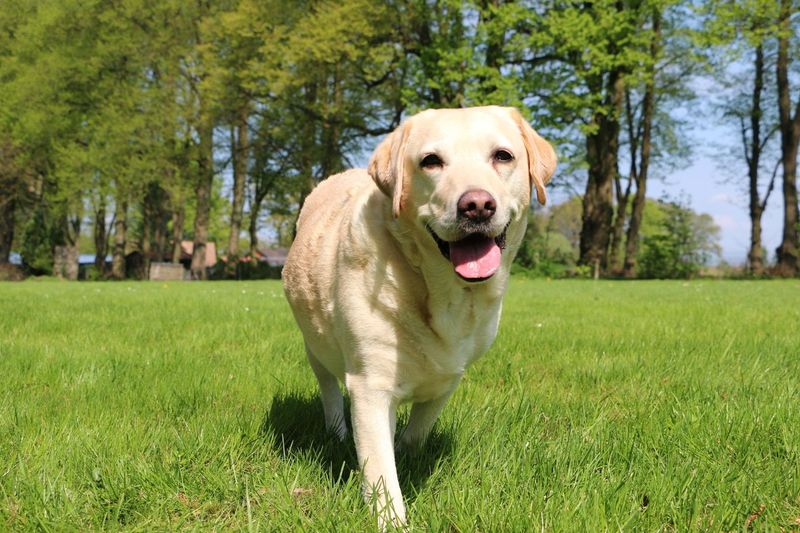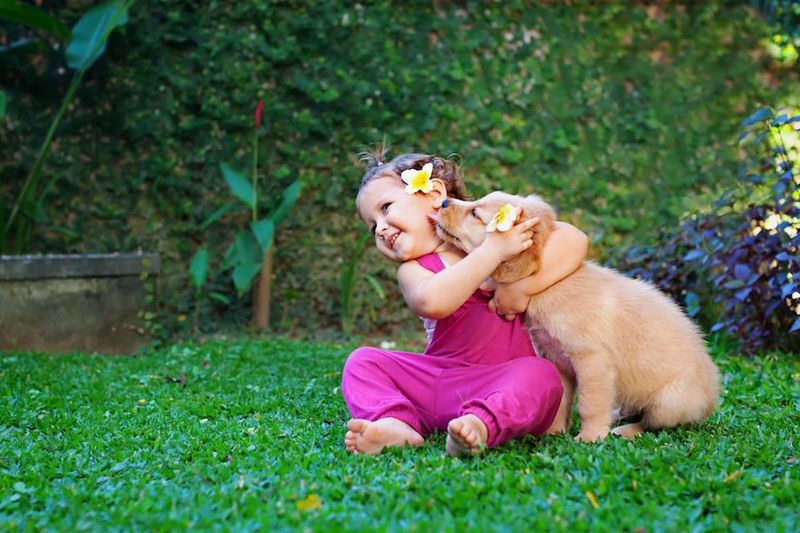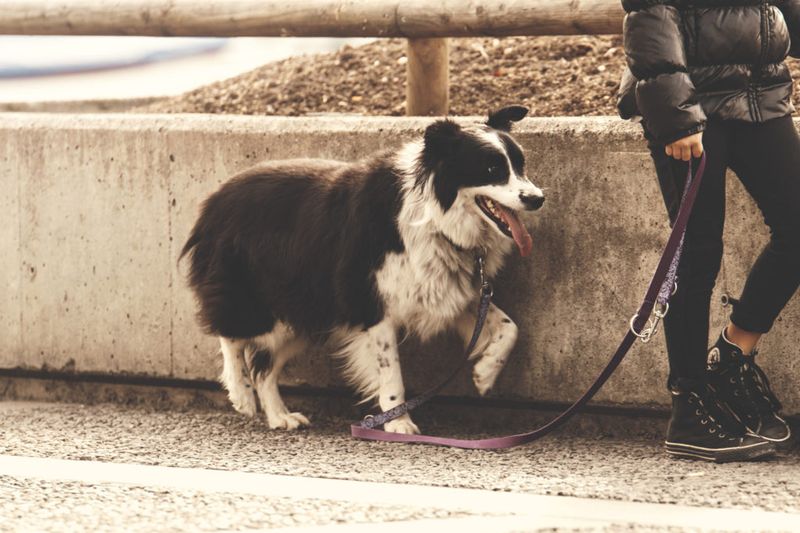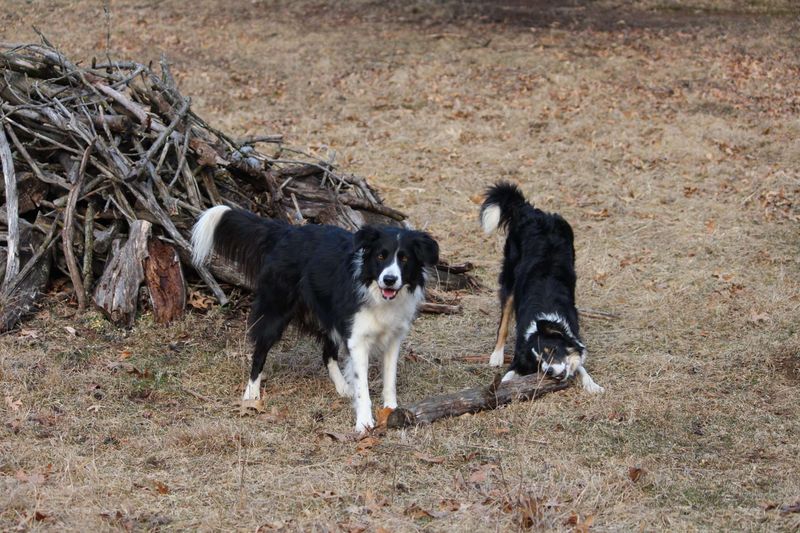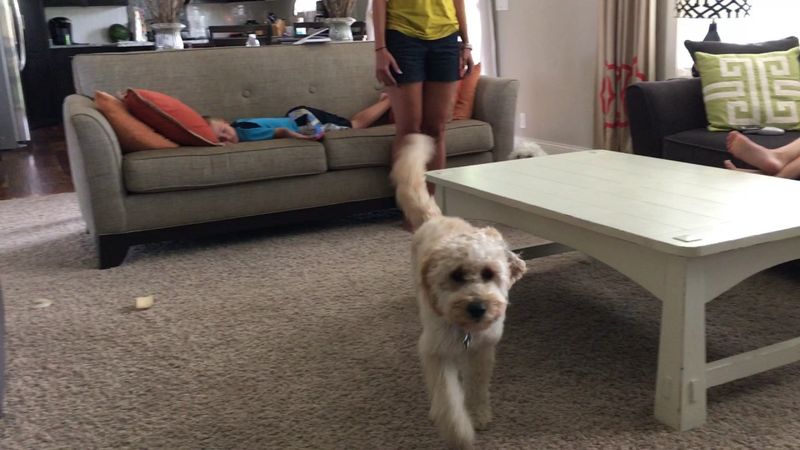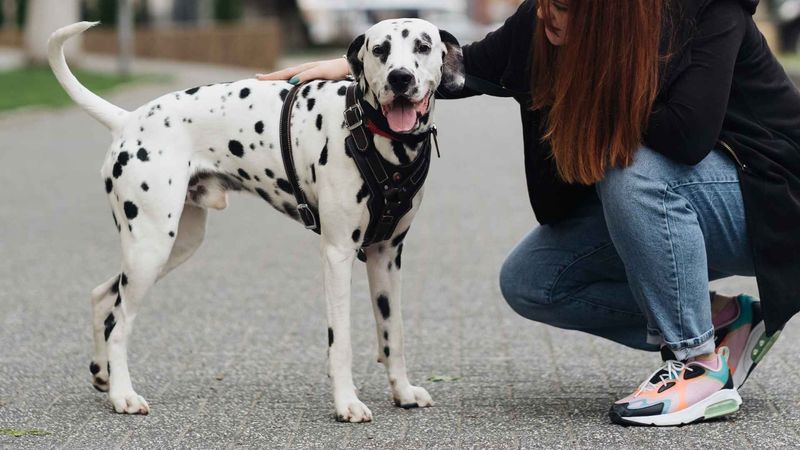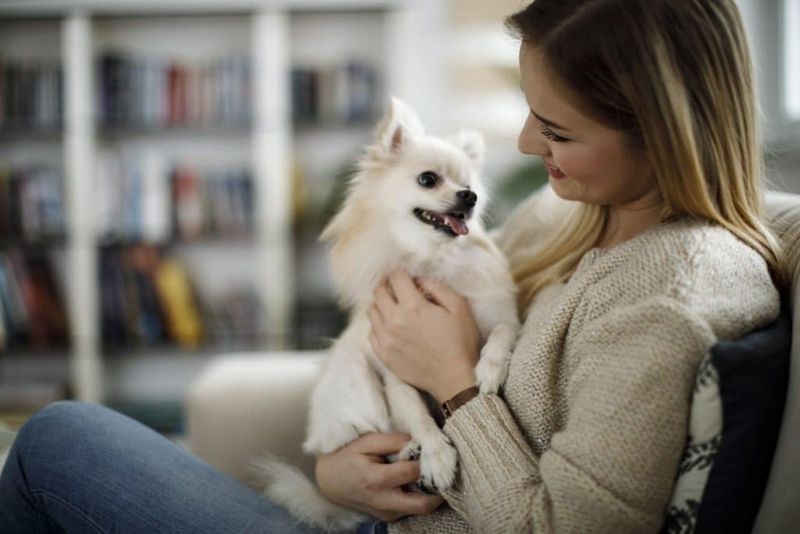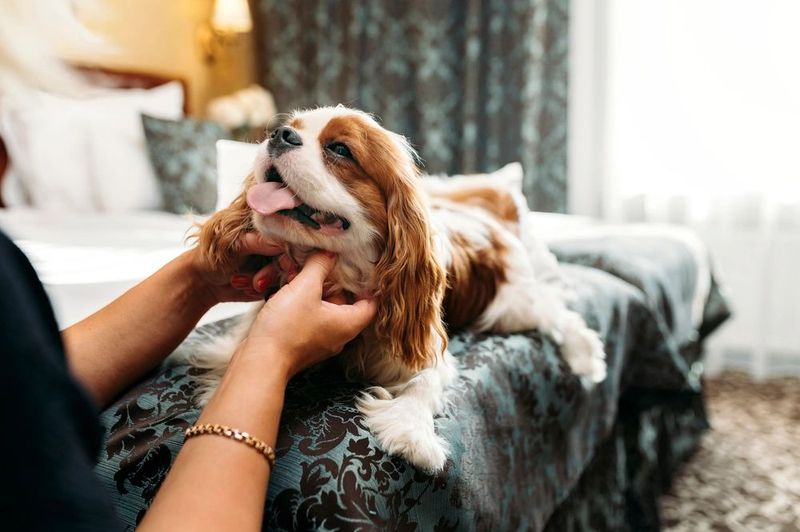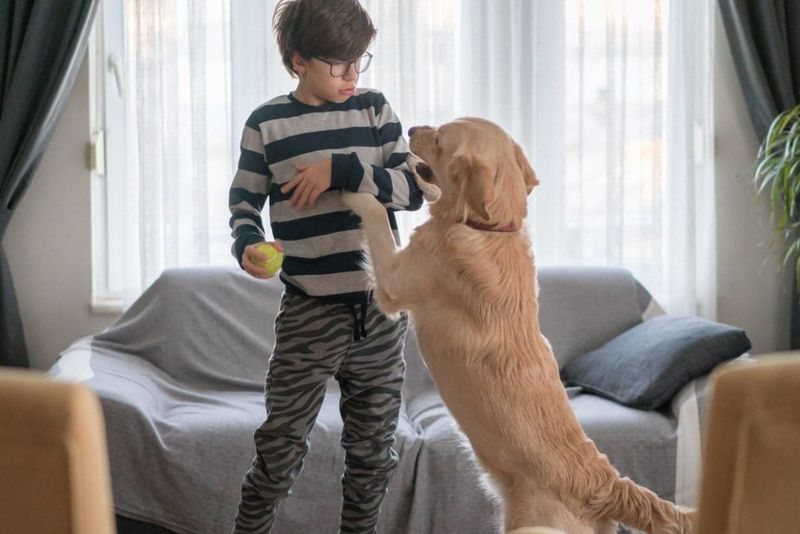Understanding which dog behaviors deserve rewards and which should not is crucial for effective training. Positive reinforcement can encourage good habits, but rewarding negative behaviors may inadvertently reinforce bad actions. By discerning the difference, owners can cultivate a harmonious relationship with their pets, promoting a well-behaved and happy dog.
Sitting on Command
A dog responding to a sit command showcases its readiness to listen and follow directions. This behavior is foundational for further training and reflects respect and understanding between the pet and the owner. When a dog sits on command, it signals its willingness to be part of a cooperative relationship.
Rewarding this action reinforces the value of listening and prepares the pet for learning more complex skills. The simplicity of the sit command makes it a perfect starting point for obedience training, helping to set a positive tone for future interactions.
Coming When Called
When a dog eagerly runs to you upon hearing its name, it demonstrates trust and affection, making it a moment worth celebrating. This behavior is not only heartwarming but also essential for safety reasons.
Rewarding a dog for coming when called reinforces this crucial skill, ensuring it responds promptly in various situations. This confidence-building practice creates a bond of trust, allowing for more freedom during off-leash activities, knowing your pet will return when needed.
House Training Success
Achieving house training success is a significant milestone that brings peace and cleanliness to the living space. It shows the dog’s ability to understand household rules and adapt accordingly.
Celebrating this achievement through rewards encourages the maintenance of sanitary habits, building confidence in the pet. House training is foundational for a harmonious home life, allowing for better integration of the dog into the family setting. This triumph reflects patience and diligence both from the dog and the owner.
Gentle Play
Gentle play is a delightful behavior that reflects the dog’s understanding of boundaries and its ability to interact safely with family members. Observing a dog play softly, particularly with children, is reassuring and promotes trust.
Rewarding gentle play encourages this calm and controlled demeanor, contributing to a safe and happy household environment. This behavior fosters mutual respect and understanding, laying the groundwork for a strong, loving bond.
Walking Calmly on Leash
A dog walking calmly on a leash with its owner offers a sense of pride and accomplishment. This behavior indicates understanding and patience, as it refrains from pulling or darting about.
Rewarding a calm, controlled walk strengthens the dog’s ability to navigate various environments without stress. It contributes to pleasant outings and reinforces the bond between dog and owner, ensuring enjoyable walks for both parties. This behavior is a testament to effective training and mutual respect.
Ignoring Distractions
A dog that can ignore distractions demonstrates remarkable focus and discipline. This skill is essential for maintaining order and safety during walks or in public spaces.
Rewarding a dog for ignoring distractions reinforces its ability to concentrate on the owner’s commands, fostering a more controlled and peaceful interaction with its surroundings. This behavior builds trust and confidence, ensuring the pet’s attention remains on its owner, even in stimulating environments.
Sharing Toys
Dogs sharing toys reflects a delightful spirit of cooperation and friendship. Observing dogs willingly exchange or play with toys together fosters a warm, communal atmosphere.
Rewarding this behavior encourages positive social interactions and reduces possessiveness. It creates a more harmonious environment, whether in multi-pet households or during playdates with other dogs. This sharing instinct enhances the dog’s socialization skills, building a foundation of trust and camaraderie.
Waiting Patiently
A dog exhibiting patience, especially when anticipating a walk or treat, signifies maturity and self-control. This behavior is crucial for maintaining a peaceful household dynamic.
Rewarding a dog for waiting patiently reinforces its ability to manage excitement and adhere to household routines. It builds a sense of reliability and respect, ensuring that interactions are grounded in understanding and restraint, fostering a calm and orderly environment.
Recognizing Personal Space
A dog recognizing and respecting personal space indicates an understanding of boundaries, an essential element for harmonious cohabitation. This behavior shows sensitivity and awareness of others’ comfort levels.
Rewarding a dog for respecting personal space fosters mutual respect and trust, ensuring comfortable interactions with family members and guests. It promotes a balanced environment, where both the pet and humans can enjoy their respective spaces without interference or stress.
Greeting Politely
A polite greeting from a dog, characterized by calmness and gentleness, enhances social interactions and embodies respect and friendliness. This behavior is crucial for positive experiences with guests and strangers.
Rewarding polite greetings solidifies this courteous approach, ensuring the dog approaches people with a composed demeanor. It fosters trust and confidence, making social interactions pleasant and stress-free for both the dog and those it meets.
Fetching on Command
The act of fetching on command is not only entertaining but also a testament to a dog’s willingness to engage and please. This behavior combines physical activity with mental stimulation.
Rewarding a dog for fetching reinforces its responsiveness and eagerness to participate in interactive play. It enhances the bond between pet and owner, providing opportunities for exercise and fun. Fetching on command is a delightful display of energy and cooperation, highlighting a dog’s active nature.
Showing Affection
A dog’s affectionate gestures, such as cuddling or gentle nudges, are heartwarming reminders of the bond shared. These actions reflect love and loyalty, strengthening the emotional connection.
Rewarding shows of affection encourages this bond, fostering a loving, supportive relationship. It builds a sense of security and belonging, ensuring the dog feels appreciated and cherished. This behavior enriches the household environment, creating a space filled with warmth and companionship.
Taking Treats Gently
When a dog takes a treat gently, it shows restraint and politeness, avoiding accidental harm. This behavior is crucial for safe interactions, especially with children.
Rewarding gentle treat-taking reinforces this careful approach, ensuring the dog remains mindful during feeding times. It promotes a respectful and trusting relationship between the dog and family members, contributing to a safe and loving environment. This simple yet essential behavior reflects a dog’s ability to manage excitement and show gentleness.
Jumping on People
Jumping on people may seem like a playful act, but it often leads to discomfort or accidents. This behavior, though common, can be disruptive and disrespectful.
Avoid rewarding jumping, as it reinforces hyperactivity and lack of boundaries. Instead, teaching alternative greeting methods fosters a more respectful interaction, ensuring safety and comfort for both the dog and people. Addressing this behavior helps cultivate an environment of control and understanding, maintaining harmony within social settings.
Begging for Food
Begging at the table disrupts meal times and can lead to poor dietary habits. This behavior exploits a dog’s cuteness, often resulting in unhealthy feeding practices.
Avoid rewarding begging, as it undermines established feeding routines and encourages persistence in undesirable ways. Teaching boundaries around food promotes healthier habits and respect for meal times. Addressing this behavior ensures the dog understands meal-time boundaries, supporting a balanced and orderly household.
Barking for Attention
While barking is a natural form of communication, doing so excessively for attention can be disruptive. This behavior can create tension and annoyance.
Avoid rewarding attention-seeking barking, as it validates the dog’s demanding behavior. By ignoring or redirecting this action, owners can encourage more appropriate ways for the dog to express its needs. Addressing this behavior helps maintain a peaceful environment, ensuring communication remains balanced and respectful.
Chewing Furniture
Chewing furniture is a destructive behavior that can result in costly damage. This action is often driven by boredom or teething needs.
Avoid rewarding furniture chewing by redirecting the behavior towards appropriate chew toys. Providing alternatives and supervision helps prevent this habit from forming, protecting home furnishings. By addressing this behavior, owners can encourage positive chewing habits, ensuring a safe and unspoiled living space.
Ignoring Commands
Ignoring commands reflects a dog’s reluctance to listen and cooperate, posing challenges to obedience and safety. This behavior can undermine training efforts.
Avoid rewarding command-ignoring, as it reinforces the dog’s independence over collaboration. Consistent training and positive reinforcement for compliance can help address this behavior, promoting a harmonious relationship. Ensuring the dog values and responds to commands is crucial for effective communication, fostering mutual respect and understanding.
Resource Guarding
Resource guarding, such as growling over food, can create tension and pose safety risks. This behavior stems from a dog’s instinct to protect its valuables.
Avoid rewarding resource guarding, as it reinforces possessiveness. By addressing this behavior through training and gradual desensitization, owners can promote sharing and reduce anxiety. Ensuring a dog feels secure sharing resources fosters a peaceful, cooperative environment, enhancing trust and safety within the household.

